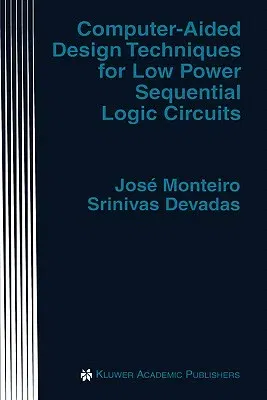José Monteiro
(Author)Computer-Aided Design Techniques for Low Power Sequential Logic Circuits (1997)Hardcover - 1997, 30 November 1996

Qty
1
Turbo
Ships in 2 - 3 days
In Stock
Free Delivery
Cash on Delivery
15 Days
Free Returns
Secure Checkout

Part of Series
The Springer International Engineering and Computer Science
Part of Series
Kluwer International Series in Engineering & Computer Science
Part of Series
International Series in Engineering and Computer Science
Part of Series
Recent Economic Thought
Part of Series
Kluwer International Series in Engineering and Computer Scie
Part of Series
Springer International Series in Engineering and Computer Sc
Print Length
181 pages
Language
English
Publisher
Springer
Date Published
30 Nov 1996
ISBN-10
0792398297
ISBN-13
9780792398295
Description
Product Details
Authors:
Book Edition:
1997
Book Format:
Hardcover
Country of Origin:
US
Date Published:
30 November 1996
Dimensions:
23.39 x
15.6 x
1.27 cm
ISBN-10:
0792398297
ISBN-13:
9780792398295
Language:
English
Location:
New York, NY
Pages:
181
Publisher:
Series:
The Springer International Engineering and Computer ScienceKluwer International Series in Engineering & Computer ScienceInternational Series in Engineering and Computer ScienceRecent Economic ThoughtKluwer International Series in Engineering and Computer ScieSpringer International Series in Engineering and Computer Sc
Weight:
462.66 gm